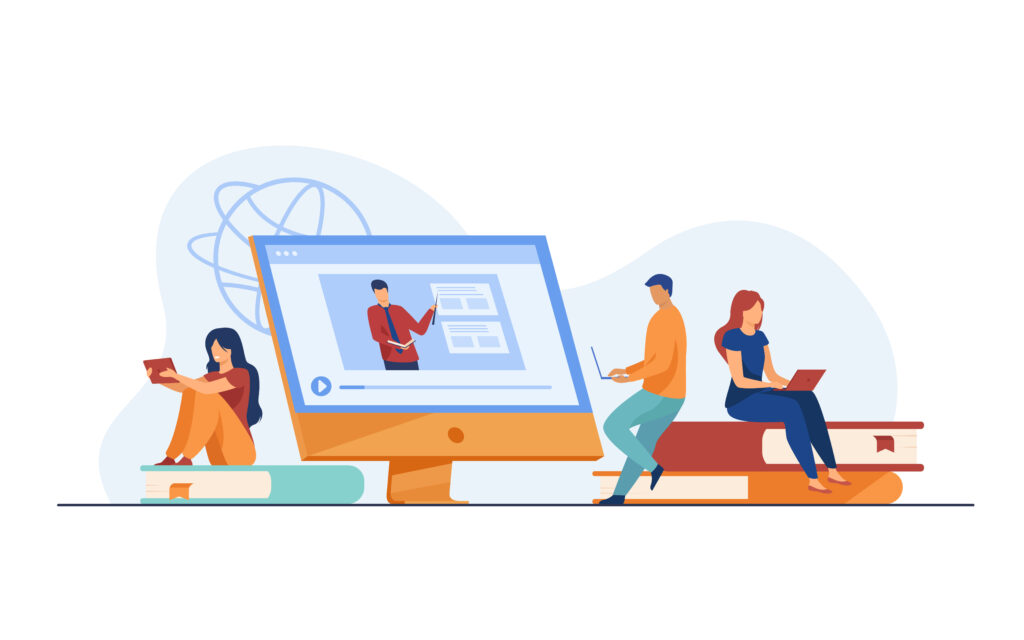From ‘Tutor Me’ Requests to Automated Essay Typers

In the dynamic landscape of education, the way students seek assistance has evolved from traditional face-to-face “tutor me” services to automated essay typers—here’s a closer look at this transformative journey.
Much like other sectors, the world of education is constantly evolving, adapting to societal needs, technological advancements, and changing learning methodologies. At the heart of this evolution is the perennial quest for knowledge and the diverse ways students seek to attain it. A few decades ago, the cry for help was a simple, “Tutor me,” often directed towards elder siblings, school teachers, or hired tutors. Today, in a digitized age brimming with artificial intelligence and machine learning, this plea for assistance is increasingly being answered by sophisticated algorithms and automated platforms.
While the human touch in education remains invaluable, there’s no denying the allure of instantaneous assistance that digital platforms promise. As we delve into this article, we’ll trace the transition from personalized tutoring sessions to the rise of automated essay typers and what it means for the future of academic assistance.
1. The Traditional ‘Tutor Me’ Era
- A. Brief History of Tutoring: The tradition of tutoring can be traced back to ancient civilizations, where learned individuals shared their knowledge with the younger generation.
- The Greeks and Their Pedagogues: Ancient Greeks valued education immensely, and affluent families often employed pedagogues, typically well-educated slaves, to guide their children through various subjects, ensuring a well-rounded education.
- Tutorial Systems in the Middle Ages: In medieval Europe, monastic schools and later universities used a tutorial system where senior students or scholars guided younger ones, cementing the importance of one-on-one instruction.
- The East and its Gurukuls: In ancient India, the ‘gurukul’ system was prominent, where students lived with their teachers, or ‘gurus’, absorbing not just academic knowledge but life lessons and values.
- B. The Role of Private Tutors: In many cultures, private tutors held a place of prestige, offering personalized guidance to students outside of regular classroom settings.
- Tutoring in the Renaissance: The Renaissance era saw a surge in personal tutors, especially among the nobility, aiming to provide a holistic education, encompassing arts, sciences, and physical training.
- Private Tutoring in the Modern World: The 20th and early 21st centuries witnessed a boom in private tutoring, driven by competitive educational landscapes and the need for personalized attention to cater to individual student needs.
- Impact on Individual Learning: Private tutoring has often been the key to unlocking a student’s potential, offering bespoke strategies tailored to each learner’s strengths and weaknesses.
- C. Transition to Online Tutoring: With the advent of the internet, a significant shift occurred in the tutoring domain, making ‘tutor me’ requests just a click away.
- The Dawn of E-Learning: As the internet became more accessible, the late 1990s and early 2000s saw a surge in e-learning platforms, transforming the face of traditional education.
- Benefits of Online Tutoring: Beyond geographical boundaries, online tutoring offers students flexibility, a plethora of resources, and the ability to connect with experts from around the world.
- Challenges Faced: However, like any burgeoning sector, online tutoring faced hurdles, including issues with connectivity, the impersonality of virtual sessions, and the initial resistance from traditional education proponents.
2. Automated Homework Help: What Does it Mean?

- A. Definition and Overview: Automated assignment assistance, a relatively new concept, leverages technology to provide students with instantaneous academic support.
- Emergence of the Digital Age: As technology became an integral part of our daily lives, its influence permeated into the education sector, giving birth to automated learning tools.
- Beyond Traditional Software: Moving past basic word processors and research tools, modern automated assistance harnesses the power of advanced algorithms, AI, and machine learning to deliver personalized academic solutions.
- Why Students Turn to Automation: The allure of instantaneous results, tailored solutions, and round-the-clock availability have made automated tools a go-to for many students.
- B. Types of Automated Assistance: From AI-driven chatbots to essay generators, a variety of automated tools have been developed to cater to students’ diverse needs.
- AI-Driven Chatbots: These are interactive platforms programmed to answer student queries in real-time, guiding them through complex topics or even assisting with homework.
- Essay and Paper Generators: Tools designed to produce essays or academic writings based on user-defined parameters, often by collating information from vast databases.
- Automated Proofreading Tools: Leveraging AI, these platforms detect grammatical errors, and sentence structure issues and even offer stylistic suggestions to enhance the quality of written assignments.
- Online Quizzing and Testing Platforms: Offering students the chance to test their knowledge instantly, these platforms provide immediate feedback and often tailor subsequent questions based on student performance.
- C. The Human Touch in Automation: Despite the rise of machines, the human element remains crucial in refining, guiding, and enhancing the offerings of automated tools.
- Human-Curated Content Databases: Many essay generators and learning platforms rely on databases curated and refined by human experts, ensuring quality and accuracy.
- Feedback Loops: Automated platforms often incorporate feedback mechanisms where human input helps improve and tailor the system’s responses over time.
- The Role of Educators: Even as automated tools gain traction, educators play a pivotal role in guiding their effective and ethical use, ensuring they complement rather than replace traditional learning methods.

3. The Rise of Automated Essay Typers
- A. Understanding Essay Typers: Automated essay typers are digital platforms that generate essays or academic papers based on user input, often producing content within minutes.
- Mechanics of Essay Typers: Delving into the intricacies, essay typers sift through vast databases, using AI and natural language processing to construct coherent, structured essays tailored to the given prompt.
- Popularity Among Students: With increasing academic pressures and tight deadlines, many students turn to essay typers as a quick-fix solution or even as a foundation upon which they can build.
- Beyond Just Essays: Modern typers have evolved to produce research papers, thesis abstracts, and even short stories, showcasing their versatile capabilities.
- B. Benefits of Using Essay Typers: While controversial, essay typers offer several advantages, such as speed, convenience, and the potential to act as a starting point for research.
- Immediate Results: In our fast-paced world, the allure of instant essay generation can be particularly enticing for time-strapped students.
- Diverse Perspectives: By drawing from a wide range of sources, essay typers can introduce users to viewpoints and data they might not have encountered on their own.
- Skill Development: For those who use them ethically, essay typers can act as a tool to understand essay structuring, argument construction, and effective sourcing.
- C. Potential Drawbacks and Ethical Concerns: With the rise of these platforms comes a debate on academic integrity, authenticity, and the potential risks of over-reliance on automation.
- Academic Integrity at Stake: The ease of producing essays raises concerns about plagiarism, devaluing genuine effort, and potentially rendering academic qualifications meaningless.
- Loss of Personal Touch: Essays are not just assignments but reflections of a student’s understanding, perspective, and voice; over-reliance on generators might dilute this individuality.
- Data Privacy Issues: As users input essay prompts or topics, concerns arise about how these platforms store, use, or potentially monetize user data.
- Skill Atrophy: Just as calculators made manual arithmetic less common, there’s a potential risk that students might lose essential research and writing skills if they lean too heavily on automated solutions.
4. Comparing Traditional Tutoring to Automated Assistance
- A. Personal Touch vs. Instant Gratification: The major distinction between traditional tutors and automated tools lies in the human connection and the immediacy of results.
- Depth of Interaction: Traditional tutors, like those at prooftutors.com, not only provide knowledge but also mentorship, understanding a student’s strengths, weaknesses, and learning styles. This tailored approach can lead to deeper, more meaningful learning experiences.
- Speed of Response: Automated platforms respond almost instantly, catering to immediate needs, be it a quick answer, essay drafting, or proofreading. However, the speed might sometimes come at the expense of depth and personalization.
- B. Quality of Input and Output: While tutors provide curated knowledge based on years of expertise, automated systems are only as good as the algorithms and data behind them.
- Expertise Matters: Platforms like prooftutors.com boast experienced educators who bring a wealth of knowledge, ensuring accurate and quality content in their teaching.
- Consistency vs. Adaptability: Automated tools provide consistent responses based on their programming. In contrast, human tutors adapt their teaching methods based on a student’s evolving needs, making each session unique and targeted.
- C. Cost Implications: With traditional tutors often charging by the hour, automated systems present an affordable, if not free, alternative for students.
- Value for Money: While automated tools might seem economical, the investment in traditional tutoring, especially with reputable platforms like prooftutors.com, ensures a comprehensive learning experience that goes beyond just answering questions.
- Hidden Costs of Automation: The apparent savings from using automated tools might be offset by potential pitfalls such as misinformation, lack of depth, or even academic penalties in cases of misuse.
- D. The Best of Both Worlds: Embracing a hybrid approach, combining the human touch of tutors with the efficiency of automation, can provide an optimal learning experience.
- Integrated Learning: Platforms like prooftutors.com and feeltutors.com could potentially leverage automation for preliminary tasks, such as basic queries or draft reviews while reserving in-depth sessions for human tutors. This would ensure timely assistance without compromising on quality.
- Ethical Use of Automation: Under the guidance of experienced tutors, students can learn to use automated tools responsibly, extracting value without jeopardizing their academic integrity.


- FAST HOMEWORK HELP
- HELP FROM TOP TUTORS
- ZERO PLAGIARISM
- NO AI USED
- SECURE PAYMENT SYSTEM
- PRIVACY GUARANTEED
FAQ: From ‘Tutor Me’ Requests to Automated Essay Typers
Q1: Are traditional tutoring methods becoming obsolete with the rise of automated assistance?
No, traditional tutoring methods are not becoming obsolete. While automated tools offer quick and sometimes convenient solutions, the personal touch, mentorship, and tailored instruction of traditional tutoring remain invaluable. Platforms like prooftutors.com emphasize the continued relevance and effectiveness of human-led education.
Q2: How reliable are automated essay typers in producing high-quality content?
Automated essay typers are based on algorithms and vast databases, so they can produce structured content quickly. However, the depth, originality, and nuance of human thought might not always be captured. It’s essential to view these tools as a starting point or aid rather than a definitive solution.
Q3: Can I completely replace my tutoring sessions with automated tools for my assignments?
While automated tools can be beneficial, relying solely on them might limit your learning and understanding. Traditional tutoring sessions, especially from platforms like prooftutors.com, offer comprehensive insights, feedback, and guidance that automated systems can’t replicate.
Q4: Are there risks associated with using automated essay typers for academic assignments?
Yes, there are several risks, including potential academic integrity issues, lack of originality in the content, and potential misinformation. Always ensure that you understand your institution’s guidelines regarding the use of such tools.
Q5: How can I get the best of both traditional tutoring and automated assistance?
Embrace a hybrid approach. Use automated tools for preliminary tasks or initial drafts, then refine and deepen your understanding with the help of a human tutor. Platforms like prooftutors.com might even guide you on how to use automated tools ethically and effectively.
Q6: How does prooftutors.com ensure the quality and effectiveness of its tutoring sessions in the age of automation?
Prooftutors.com emphasizes the value of human interaction, mentorship, and tailored instruction. The platform employs experienced educators who understand individual student needs, ensuring that each session is both impactful and relevant.
How To Order A Paper
Start by describing the details of your assignments. That may include assignments such as essays, research papers, PowerPoint, etc. You will also select the subject area to help us allocate the most suitable writer.
Select your preferred deadline, ideally some hours before your submission deadline. Include all instructions and files, including templates, reading materials, and additional assignment instructions. Remember to indicate the preferred referencing style if it applies.
Once you have described the assignment, register with your email if you have not already done so. You will be redirected to your client dashboard, where you can track your order’s progress and communicate with the writer, editor, and support team.
The important part before we begin working on your paper is to make full or partial payment using your bank card or PayPal. You may let us know if you experience any challenges.
Your order will be completed before or on the deadline you described earlier. Kindly download the submission from us and add your name and class details in the placeholders. These placeholders are on the cover page or the header.
If you review the paper and find it has not met your expectations, request a revision immediately. If you review the paper and find that you are happy with it, rate the write and approve the submission. Spread the word about us and come back again.
